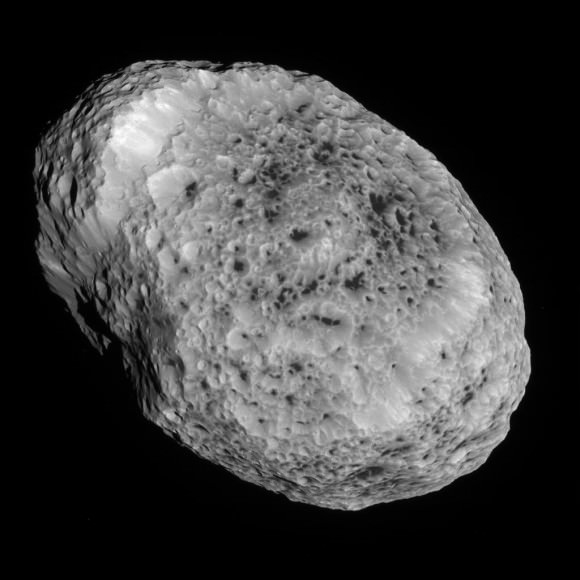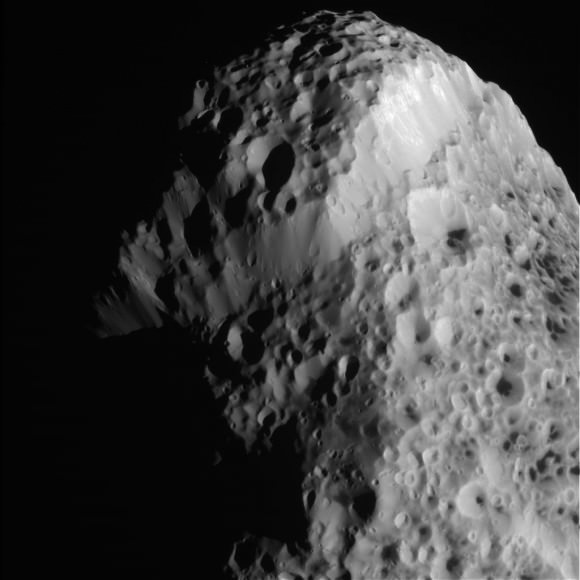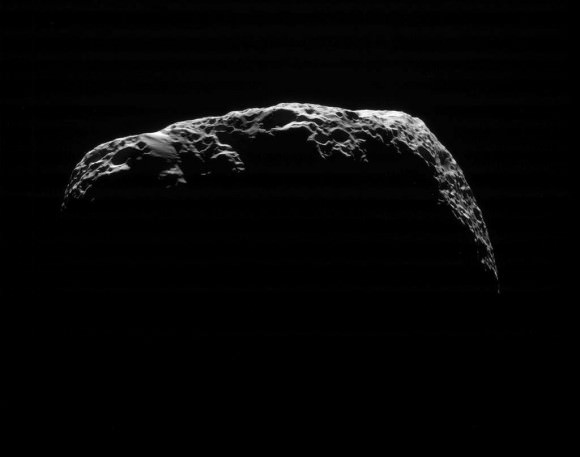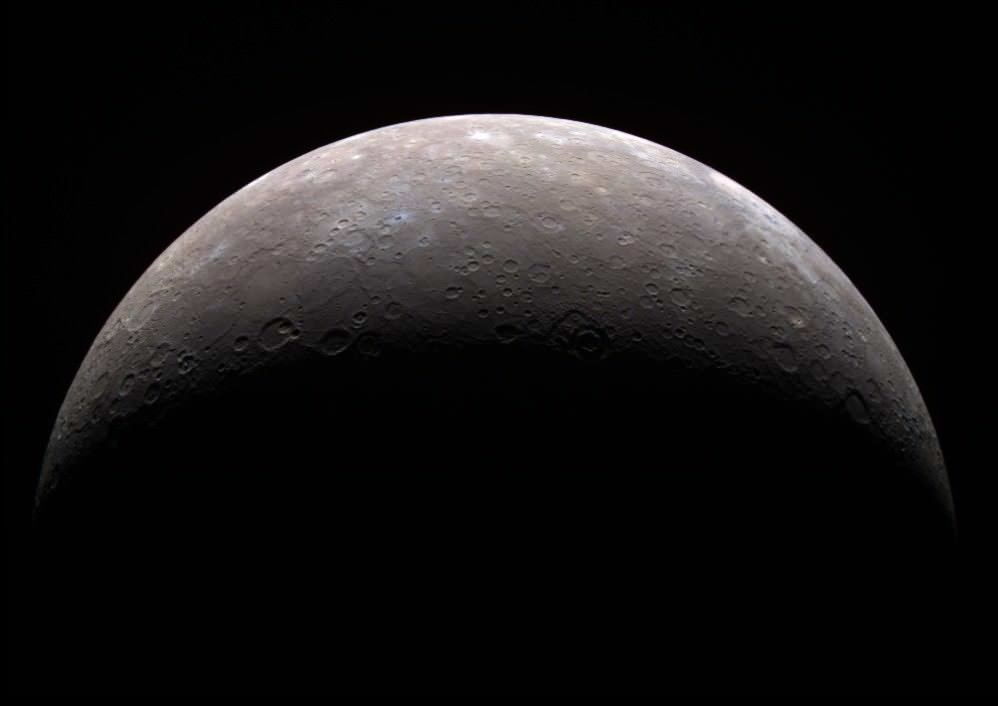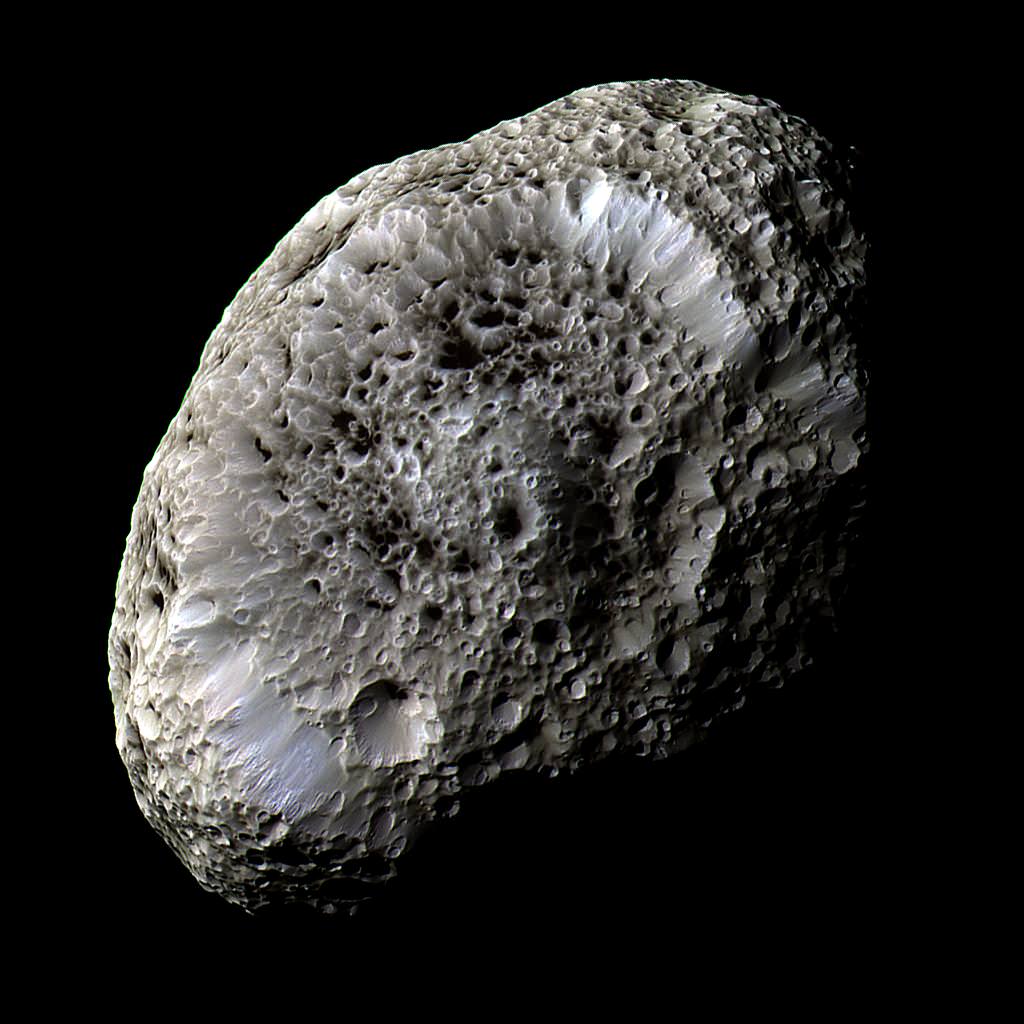The Solar System is a spinny place. Everything’s turning turning. But if you look closely, there are some pretty strange spins going on. Today we talk about how everything started turning, and the factors that still “impact” them today.
Continue reading “Astronomy Cast Ep. 409: Spin in the Solar System”
How Many Moons Does Mercury Have?
Virtually every planet in the Solar System has moons. Earth has The Moon, Mars has Phobos and Deimos, and Jupiter and Saturn have 67 and 62 officially named moons, respectively. Heck, even the recently-demoted dwarf planet Pluto has five confirmed moons – Charon, Nix, Hydra, Kerberos and Styx. And even asteroids like 243 Ida may have satellites orbiting them (in this case, Dactyl). But what about Mercury?
If moons are such a common feature in the Solar System, why is it that Mercury has none? Yes, if one were to ask how many satellites the planet closest to our Sun has, that would be the short answer. But answering it more thoroughly requires that we examine the process through which other planets acquired their moons, and seeing how these apply (or fail to apply) to Mercury.
How Many Moons Does Mars Have?

Many of the planets in our Solar System have a system of moons. But among the rocky planets that make up the inner Solar System, having moons is a privilege enjoyed only by two planets: Earth and Mars. And for these two planets, it is a rather limited privilege compared to gas giants like Jupiter and Saturn which each have several dozen moons.
Whereas Earth has only one satellite (aka. the Moon), Mars has two small moons in orbit around it: Phobos and Deimos. And whereas the vast majority of moons in our Solar System are large enough to become round spheres similar to our own Moon, Phobos and Deimos are asteroid-sized and misshapen in appearance.
Continue reading “How Many Moons Does Mars Have?”Cassini’s Close Flyby of Enceladus Yields Surprising, Perplexing Imagery
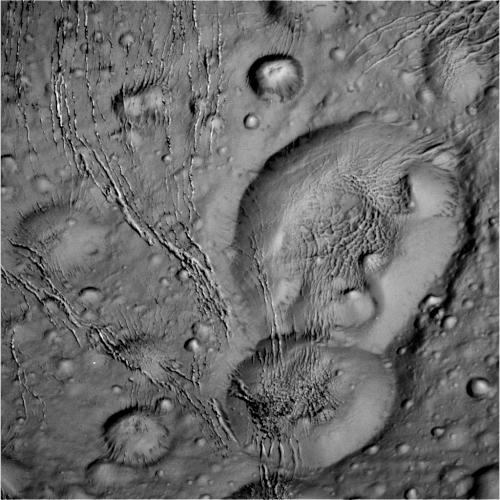
If you thought Saturn’s moon Enceladus couldn’t get any more bizzare — with its magnificent plumes, crazy tiger-stripe-like fissures and global subsurface salty ocean — think again. New images of this moon’s northern region just in from the Cassini spacecraft show surprising and perplexing features: a tortured surface where craters look like they are melting, and fractures that cut straight across the landscape.
“We’ve been puzzling over Enceladus’ south pole for so long, time to be puzzled by the north pole!” tweeted NASA engineer Sarah Milkovich, who formerly worked on the Cassini mission.
While the Cassini mission has been at the Saturn system since 2004 and flown by this moon several times, this is the spacecraft’s first close-up look at the north polar region of Enceladus. On October 14, 2015 the spacecraft passed at an altitude of just 1,839 kilometers (1,142 miles) above the moon’s surface.
See more imagery below:
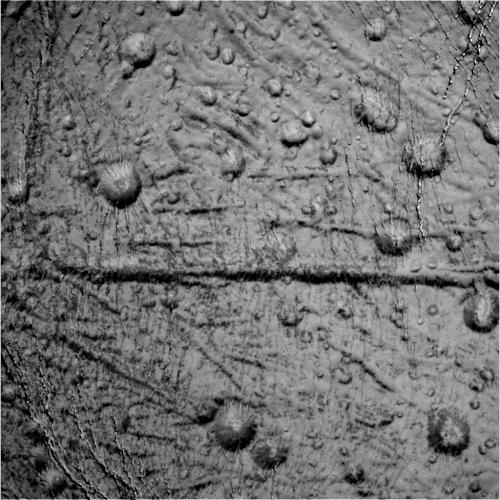
The reason Cassini hasn’t been able to see the northern terrain of Enceladus previously is that it was concealed by the darkness of winter. It’s now summer in the high northern latitudes, and scientists have been anxious to take a look at this previously unseen region. Gauging by the posts of “Wow!” and “Enceladus what are you doing??” by scientists on social media, the Cassini team is as excited and perplexed by these images as the rest of us.
“We’ve been following a trail of clues on Enceladus for 10 years now,” said Bonnie Buratti, a Cassini science team member and icy moons expert at NASA’s Jet Propulsion Laboratory. “The amount of activity on and beneath this moon’s surface has been a huge surprise to us. We’re still trying to figure out what its history has been, and how it came to be this way.”
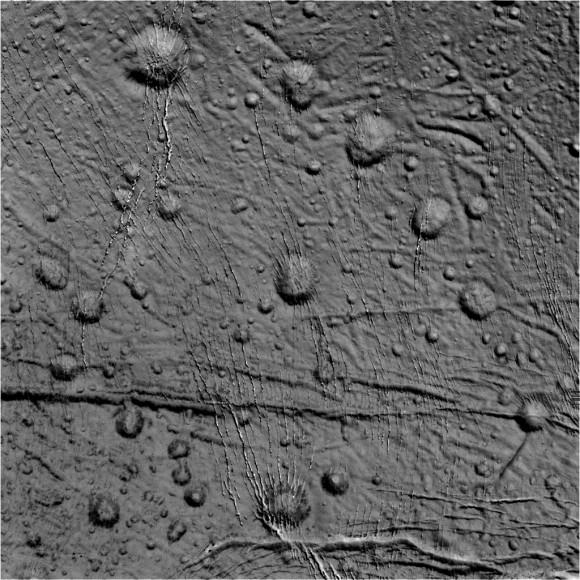
While these raw images just arrived this morning, already image editing enthusiasts have dived into the data to create composite and color images. Here are two from UT writer Jason Major and image contributor Kevin Gill:
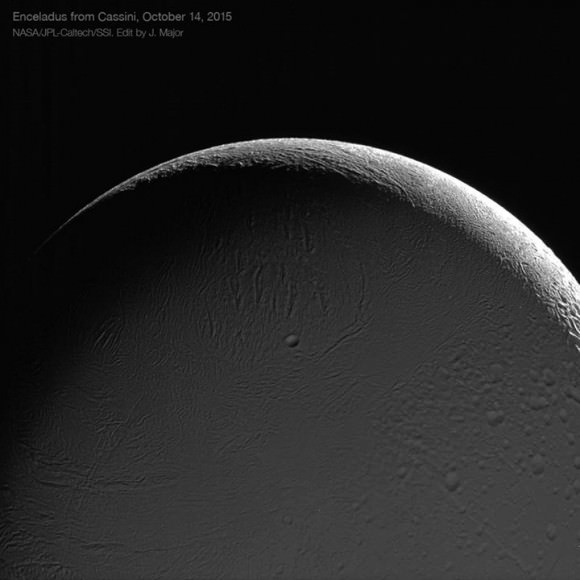
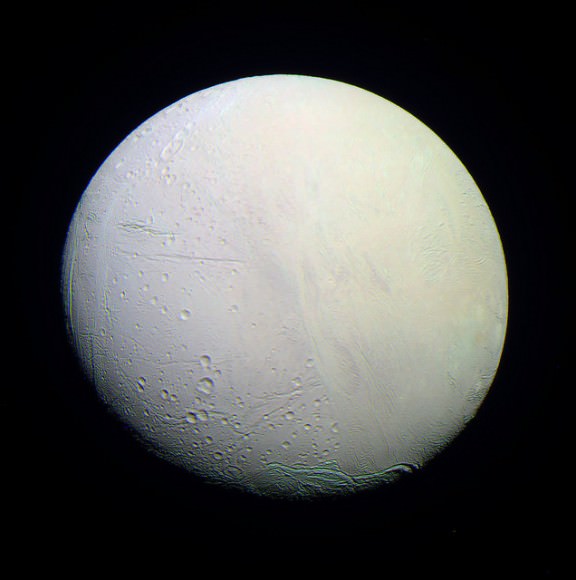
In an email, Cassini imaging team leader Carolyn Porco explained the flyby: “Our cameras were active during most of this encounter, allowing the imaging team and other remote-sensing instrument teams to observe the Saturn-opposing side of Enceladus on the inbound leg of the encounter, and a narrow, sunlit crescent outbound.”
From previous imagery and study of this moon, it has been suggested that the fractured and wrinkled terrain on Enceladus could be the scars of a shift in the moon’s spin rate. The moon has likely undergone multiple episodes of geologic activity spanning a considerable portion of its lifetime.
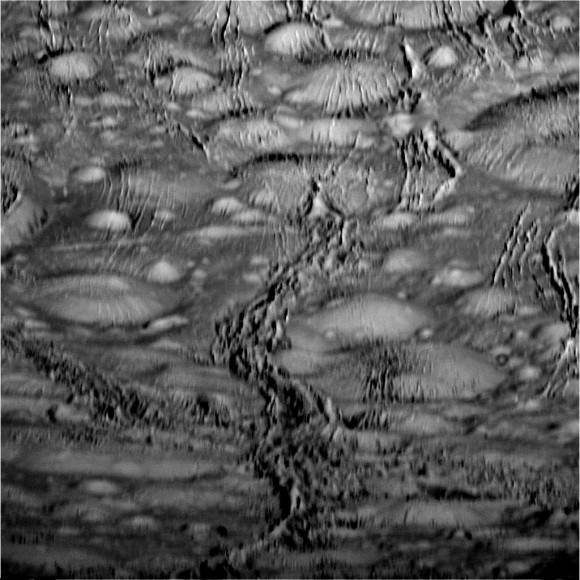
While these images are incredible, get ready for even more. An even closer flyby of Enceladus is scheduled for Wednesday, Oct. 28, during which Cassini will come dizzyingly close to the icy moon, passing just 49 kilometers (30 miles) above the moon’s south polar region. NASA says that during this encounter, Cassini will make its deepest-ever dive through the moon’s plume of icy spray, collecting images and valuable data about what’s going on beneath the frozen surface. Cassini scientists are hopeful data from that flyby will provide evidence of how much hydrothermal activity is occurring in the moon’s ocean, and how the amount of activity impacts the habitability of Enceladus’ ocean.
Then another flyby — Cassini’s final scheduled close flyby of Enceladus — on Dec. 19 will examine how much heat is coming from the moon’s interior from an altitude of 4,999 kilometers (3,106 miles).
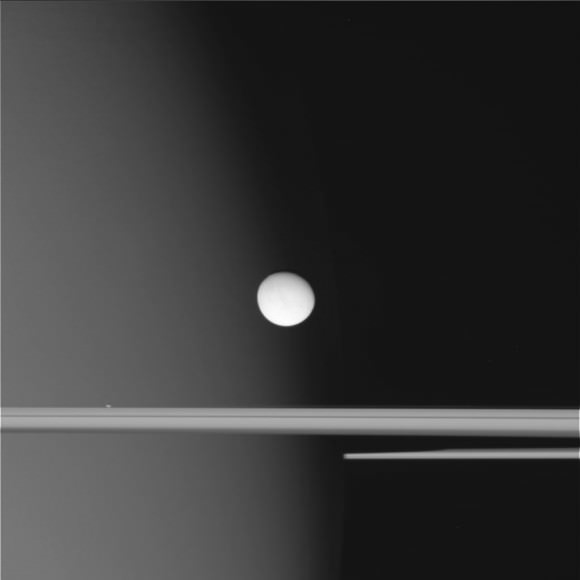
An interesting side note is that the Cassini mission launched 18 years ago today (October 15, 1997).
Again stay tuned for more, and you can see all of Cassini’s raw image here, and find out more details of the upcoming flybys at this CICLOPS page.
How Many Moons Does Jupiter Have?
Jupiter was appropriately named by the Romans, who chose to name it after the king of the gods. In addition to being the largest planet in our Solar System – with two and a half times the mass of all the other planets combined – it also has the most moons of any Solar planet. So far, 67 natural satellites have been discovered around the gas giant, and more could be on the way.
The moons of Jupiter are so numerous and so diverse that they are broken down into several groups. First, there are the largest moons known as the Galileans, or Main Group. Together with the smaller Inner Group, they make up Jupiter’s Regular Satellites. Beyond them, there are the many Irregular Satellites that circle the planet, along with its debris rings. Here’s what we know about them…
Discovery and Naming:
Using a telescope of his own design, which allowed for 20 x normal magnification, Galileo Galilei was able to make the first observations of celestial bodies that were not visible to the naked eye. In 1610, he made the first recorded discovery of moons orbiting Jupiter, which later came to be known as the Galilean Moons.
At the time, he observed only three objects, which he believed to be fixed stars. However, between January and March of 1610, he continued to observe them, and noted a fourth body as well. In time, he realized that these four bodies did not behave like fixed stars, and were in fact objects that orbited Jupiter.

These discoveries proved the importance of using the telescope to view celestial objects that had previously remained unseen. More importantly, by showing that planets other than Earth had their own system of satellites, Galileo dealt a significant blow to the Ptolemaic model of the universe, which was still widely accepted.
Seeking the patronage of the Grand Duke of Tuscany, Cosimo de Medici, Galileo initially sought permission to name the moons the “Cosmica Sidera” (or Cosimo’s Stars). At Cosimo’s suggestion, Galileo changed the name to Medicea Sidera (“the Medician stars”), honouring the Medici family. The discovery was announced in the Sidereus Nuncius (“Starry Messenger”), which was published in Venice in March 1610.
However, German astronomer Simon Marius had independently discovered these moons at the same time as Galileo. At the behest of Johannes Kepler, he named the moons after the lovers of Zues (the Greek equivalent of Jupiter). In his treatise titled Mundus Jovialis (“The World of Jupiter”, published in 1614) he named them Io, Europa, Ganymede, and Callisto.
Galileo steadfastly refused to use Marius’ names and instead invented the numbering scheme that is still used today, alongside proper moon names. In accordance with this scheme, moons are assigned numbers based on their proximity to their parent planet and increase with distance. Hence, the moons of Io, Europa, Ganymede and Callisto were designated as Jupiter I, II, III, and IV, respectively.
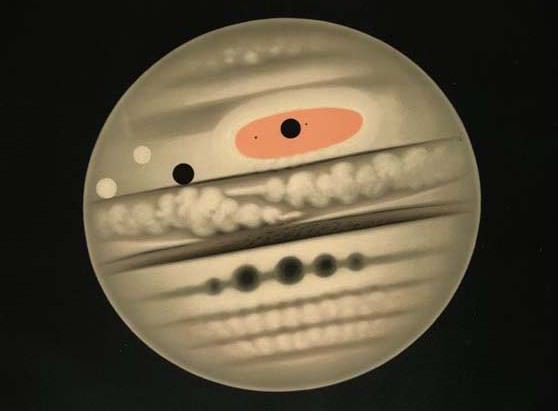
After Galileo made the first recorded discovery of the Main Group, no additional satellites were discovered for almost three centuries – not until E. E. Barnard observed Amalthea in 1892. In fact, it was not until the 20th century, and with the aid of telescopic photography and other refinements, that most of the Jovian satellites began to be discovered.
Himalia was discovered in 1904, Elara in 1905, Pasiphaë in 1908, Sinope in 1914, Lysithea and Carme in 1938, Ananke in 1951, and Leda in 1974. By the time Voyager space probes reached Jupiter around 1979, 13 moons had been discovered, while Voyager herself discovered an additional three – Metis, Adrastea, and Thebe.
Between October 1999 and February 2003, researchers using sensitive ground-based detectors found and later named another 34 moons, most of which were discovered by a team led by Scott S. Sheppard and David C. Jewitt. Since 2003, 16 additional moons have been discovered but not yet named, bringing the total number of known moons of Jupiter to 67.
Though the Galilean moons were named shortly after their discovery in 1610, the names of Io, Europa, Ganymede and Callisto fell out of favor until the 20th century. Amalthea (aka. Jupiter V) was not so named until an unofficial convention took place in 1892, a name that was first used by the French astronomer Camille Flammarion.
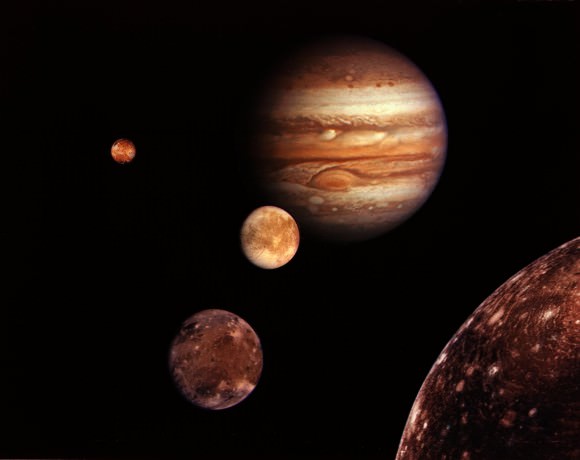
The other moons, in the majority of astronomical literature, were simply labeled by their Roman numeral (i.e. Jupiter IX) until the 1970s. This began in 1975 when the International Astronomical Union’s (IAU) Task Group for Outer Solar System Nomenclature granted names to satellites V–XIII, thus creating a formal naming process for any future satellites discovered. The practice was to name newly discovered moons of Jupiter after lovers and favorites of the god Jupiter (Zeus); and since 2004, also after their descendants.
Regular Satellites:
Jupiter’s Regular Satellites are so named because they have prograde orbits – i.e. they orbit in the same direction as the rotation of their planet. These orbits are also nearly circular and have a low inclination, meaning they orbit close to Jupiter’s equator. Of these, the Galilean Moons (aka. the Main Group) are the largest and the most well known.
These are Jupiter’s largest moons, not to mention the Solar System’s fourth, sixth, first and third largest satellites, respectively. They contain almost 99.999% of the total mass in orbit around Jupiter, and orbit between 400,000 and 2,000,000 km from the planet. They are also among the most massive objects in the Solar System with the exception of the Sun and the eight planets, with radii larger than any of the dwarf planets.
They include Io, Europa, Ganymede, and Callisto, and were all discovered by Galileo Galilei and named in his honor. The names of the moons, which are derived from the lovers of Zeus in Greek mythology, were prescribed by Simon Marius soon after Galileo discovered them in 1610. Of these, the innermost is Io, which is named after a priestess of Hera who became Zeus’ lover.
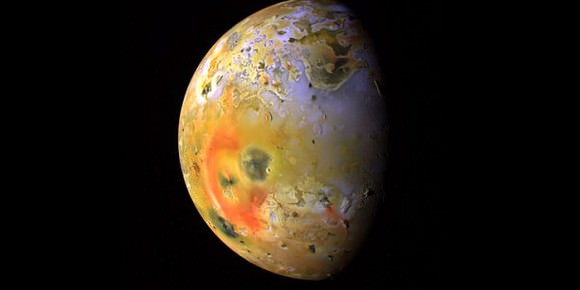
With a diameter of 3,642 kilometers, it is the fourth-largest moon in the Solar System. With over 400 active volcanoes, it is also the most geologically active object in the Solar System. Its surface is dotted with over 100 mountains, some of which are taller than Earth’s Mount Everest.
Unlike most satellites in the outer Solar System (which are covered with ice), Io is mainly composed of silicate rock surrounding a molten iron or iron sulfide core. Io has an extremely thin atmosphere made up mostly of sulfur dioxide (SO2).
The second innermost Galilean moon is Europa, which takes its name from the mythical Phoenician noblewoman who was courted by Zeus and became the queen of Crete. At 3121.6 kilometers in diameter, it is the smallest of the Galileans, and slightly smaller than the Moon.
Europa’s surface consists of a layer of water surrounding the mantle which is thought to be 100 kilometers thick. The uppermost section is solid ice while the bottom is believed to be liquid water, which is made warm due to heat energy and tidal flexing. If true, then it is possible that extraterrestrial life could exist within this subsurface ocean, perhaps near a series of deep-ocean hydrothermal vents.
The surface of Europa is also one of the smoothest in the Solar System, a fact which supports the idea of liquid water existing beneath the surface. The lack of craters on the surface is attributed to the surface being young and tectonically active. Europa is primarily made of silicate rock and likely has an iron core, and a tenuous atmosphere composed primarily of oxygen.
Next up is Ganymede. At 5262.4 kilometers in diameter, Ganymede is the largest moon in the Solar System. While it is larger than the planet Mercury, the fact that it is an icy world means that it has only half of Mercury’s mass. It is also the only satellite in the Solar System known to possess a magnetosphere, likely created through convection within the liquid iron core.
Ganymede is composed primarily of silicate rock and water ice, and a salt-water ocean is believed to exist nearly 200 km below Ganymede’s surface – though Europa remains the most likely candidate for this. Ganymede has a high number of craters, most of which are now covered in ice, and boasts a thin oxygen atmosphere that includes O, O2, and possibly O3 (ozone), and some atomic hydrogen.
Callisto is the fourth and farthest Galilean moon. At 4820.6 kilometers in diameter, it is also the second largest of the Galileans and third largest moon in the Solar System. Callisto is named after the daughter of the Arkadian King, Lykaon, and a hunting companion of the goddess Artemis.
Composed of approximately equal amounts of rock and ices, it is the least dense of the Galileans, and investigations have revealed that Callisto may also have an interior ocean at depths greater than 100 kilometers from the surface.
Callisto is also one of the most heavily cratered satellites in the Solar System – the greatest of which is the 3000 km wide basin known as Valhalla. It is surrounded by an extremely thin atmosphere composed of carbon dioxide and probably molecular oxygen. Callisto has long been considered the most suitable place for a human base for future exploration of the Jupiter system since it is furthest from the intense radiation of Jupiter.
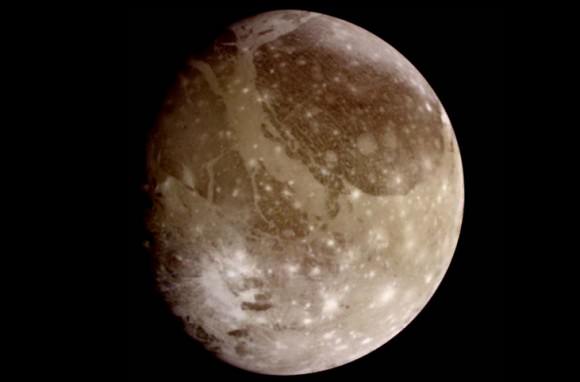
The Inner Group (or Amalthea group) are four small moons that have diameters of less than 200 km, orbit at radii less than 200,000 km, and have orbital inclinations of less than half a degree. This groups includes the moons of Metis, Adrastea, Amalthea, and Thebe.
Along with a number of as-yet-unseen inner moonlets, these moons replenish and maintain Jupiter’s faint ring system – Metis and Adrastea helping Jupiter’s main ring, while Amalthea and Thebe maintain their own faint outer rings.
Metis is the closest moon to Jupiter at a distance of 128,000 km. It is roughly 40 km in diameter, tidally-locked, and highly-asymmetrical in shape (with one of the diameters being almost twice as large as the smallest one). It was not discovered until the 1979 flyby of Jupiter by the Voyager 1 space probe. It was named in 1983 after the first wife of Zeus.
The second closest moon is Adrastea, which is about 129,000 km from Jupiter and 20 km in diameter. Also known as Jupiter XV, Amalthea is the second by distance, and the smallest of the four inner moons of Jupiter. It was discovered in 1979 when the Voyager 2 probe photographed it during a flyby.

Amalthea, also known as Jupiter V, is the third moon of Jupiter in order of distance from the planet. It was discovered on September 9, 1892, by Edward Emerson Barnard and named after a nymph in Greek mythology. It is thought to consist of porous water ice with unknown amounts of other materials. Its surface features include large craters and ridges.
Thebe (aka. Jupiter XIV) is the fourth and final inner moon of Jupiter. It is irregularly shaped and reddish in colour, and is thought like Amalthea to consist of porous water ice with unknown amounts of other materials. Its surface features also include large craters and high mountains – some of which are comparable to the size of the moon itself.
Irregular Satellites:
The Irregular Satellites are those that are substantially smaller and have more distant and eccentric orbits than the Regular Satellites. These moons are broken down into families that have similarities in orbit and composition. It is believed that these were at least partially formed as a result of collisions, most likely by asteroids that were captured by Jupiter’s gravitational field.
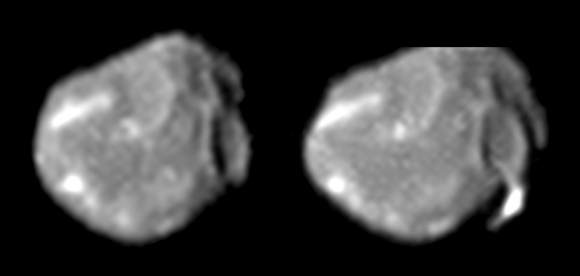
Those that are grouped into families are all named after their largest member. For example, the Himalia group is named after Himalia – a satellite with a mean radius of 85 km, making it the fifth largest moon orbiting Jupiter. It is believed that Himalia was once an asteroid that was captured by Jupiter’s gravity, which then experienced a impact that formed the moons of Leda, Lysithea, and Elara. These moons all have prograde orbits, meaning they orbit in the same direction as Jupiter’s rotation.
The Carme group takes its name from the Moon of the same name. With a mean radius of 23 km, Carme is the largest member of a family of Jovian satellites which have similar orbits and appearance (uniformly red), and are therefore thought to have a common origin. The satellites in this family all have retrograde orbits, meaning they orbit Jupiter in the opposite direction of its rotation.
The Ananke group is named after its largest satellite, which has a mean radius of 14 km. It is believed that Ananke was also an asteroid that was captured by Jupiter’s gravity and then suffered a collision which broke off a number of pieces. Those pieces became the other 15 moons in the Ananke group, all of which have retrograde orbits and appear gray in color.
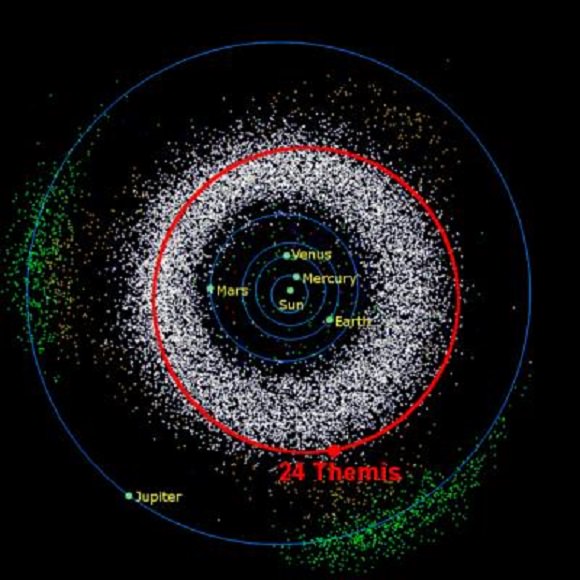
The Pasiphae group is a very diverse group which ranges in color from red to grey – signifying the possibility of it being the result of multiple collisions. Named after Paisphae, which has a mean radius of 30 km, these satellites are retrograde, and are also believed to be the result of an asteroid that was captured by Jupiter and fragmented due to a series of collisions.
There are also several irregular satellites that are not part of any particular family. These include Themisto and Carpo, the innermost and outermost irregular moons, both of which have prograde orbits. S/2003 J 12 and S/2011 J 1 are the innermost of the retrograde moons, while S/2003 J 2 is the outermost moon of Jupiter.
Structure and Composition:
As a rule, the mean density of Jupiter’s moons decrease with their distance from the planet. Callisto, the least dense of the four, has an intermediate density between ice and rock, whereas Io has a density that indicates its made of rock and iron. Callisto’s surface also has a heavily cratered ice surface, and the way it rotates indicates that its density is equally distributed.
This suggests that Callisto has no rocky or metallic core, but consists of a homogeneous mix of ice and rock. The rotation of the three inner moons, in contrast, indicates differentiation between a core of denser matter (such as silicates, rock and metals) and a mantle of lighter material (water ice).

The distance from Jupiter also accords with significant alterations in the surface structure of its moons. Ganymede reveals past tectonic movement of the ice surface, which would mean that the subsurface layers underwent partial melting at once time. Europa reveals more dynamic and recent movement of this nature, suggesting a thinner ice crust. Finally, Io, the innermost moon, has a sulfur surface, active volcanism, and no sign of ice.
All this evidence suggests that the nearer a moon is to Jupiter, the hotter its interior – with models suggesting that the level of tidal heating is in inverse proportion to the square of their distance from the planet. It is believed that all of Jupiter’s moons may have once had an internal composition similar to that of modern-day Callisto, while the rest changed over time as a result of tidal heating caused by Jupiter’s gravitational field.
What this means is that for all of Jupiter’s moons, except Callisto, their interior ice melted, allowing rock and iron to sink to the interior and water to cover the surface. In Ganymede, a thick and solid ice crust then formed while in warmer Europa, a thinner more easily broken crust formed. On Io, the closest planet to Jupiter, the heating was so extreme that all the rock melted and the water boiled out into space.
Jupiter, a gas giant of immense proportions, was appropriately named after the king of the Roman pantheon. It is only befitting that such a planet has many, many moons orbiting it. Given the discovery process, and how long it has taken us, it would not be surprising if there are more satellites around Jupiter just waiting to be discovered. Sixty-seven and counting!
Universe Today has articles on Jupiter’s largest moon and Jupiter moons.
You should also check out Jupiter’s moons and rings and Jupiter’s largest moons.
For more information, try Jupiter’s moons and Jupiter.
Astronomy Cast also has an episode on Jupiter’s moons.
Solar System Guide
The Universe is a very big place, and we occupy a very small corner of it. Known as the Solar System, our stomping grounds are not only a tiny fraction of the Universe as we know it, but is also a very small part of our galactic neighborhood (aka. the Milky Way Galaxy). When it comes right down to it, our world is just a drop of water in an endless cosmic sea.
Nevertheless, the Solar System is still a very big place, and one which is filled with its fair share of mysteries. And in truth, it was only within the relatively recent past that we began to understand its true extent. And when it comes to exploring it, we’ve really only begun to scratch the surface.
Discovery:
With very few exceptions, few people or civilizations before the era of modern astronomy recognized the Solar System for what it was. In fact, the vast majority of astronomical systems posited that the Earth was a stationary object and that all known celestial objects revolved around it. In addition, they viewed it as being fundamentally different from other stellar objects, which they held to be ethereal or divine in nature.
Although there were some Greek, Arab and Asian astronomers during Antiquity and the Medieval period who believed that the universe was heliocentric in nature (i.e. that the Earth and other bodies revolved around the Sun) it was not until Nicolaus Copernicus developed his mathematically predictive model of a heliocentric system in the 16th century that it began to become widespread.
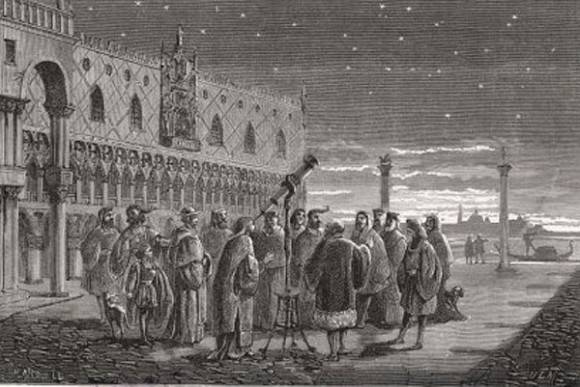
During the 17th-century, scientists like Galileo Galilei, Johannes Kepler, and Isaac Newton developed an understanding of physics which led to the gradual acceptance that the Earth revolves round the Sun. The development of theories like gravity also led to the realization that the other planets are governed by the same physical laws as Earth.
The widespread use of the telescope also led to a revolution in astronomy. After Galileo discovered the moons of Jupiter in 1610, Christian Huygens would go on to discover that Saturn also had moons in 1655. In time, new planets would also be discovered (such as Uranus and Neptune), as well as comets (such as Halley’s Comet) and the Asteroids Belt.
By the 19th century, three observations made by three separate astronomers determined the true nature of the Solar System and its place the universe. The first was made in 1839 by German astronomer Friedrich Bessel, who successfully measured an apparent shift in the position of a star created by the Earth’s motion around the Sun (aka. stellar parallax). This not only confirmed the heliocentric model beyond a doubt, but revealed the vast distance between the Sun and the stars.
In 1859, Robert Bunsen and Gustav Kirchhoff (a German chemist and physicist) used the newly invented spectroscope to examined the spectral signature of the Sun. They discovered that it was composed of the same elements as existed on Earth, thus proving that Earth and the heavens were composed of the same elements.

Then, Father Angelo Secchi – an Italian astronomer and director at the Pontifical Gregorian University – compared the spectral signature of the Sun with those of other stars, and found them to be virtually identical. This demonstrated conclusively that our Sun was composed of the same materials as every other star in the universe.
Further apparent discrepancies in the orbits of the outer planets led American astronomer Percival Lowell to conclude that yet another planet, which he referred to as “Planet X“, must lie beyond Neptune. After his death, his Lowell Observatory conducted a search that ultimately led to Clyde Tombaugh’s discovery of Pluto in 1930.
Also in 1992, astronomers David C. Jewitt of the University of Hawaii and Jane Luu of the MIT discovered the Trans-Neptunian Object (TNO) known as (15760) 1992 QB1. This would prove to be the first of a new population, known as the Kuiper Belt, which had already been predicted by astronomers to exist at the edge of the Solar System.
Further investigation of the Kuiper Belt by the turn of the century would lead to additional discoveries. The discovery of Eris and other “plutoids” by Mike Brown, Chad Trujillo, David Rabinowitz and other astronomers would lead to the Great Planet Debate – where IAU policy and the convention for designating planets would be contested.
Structure and Composition:
At the core of the Solar System lies the Sun (a G2 main-sequence star) which is then surrounded by four terrestrial planets (the Inner Planets), the main Asteroid Belt, four gas giants (the Outer Planets), a massive field of small bodies that extends from 30 AU to 50 AU from the Sun (the Kuiper Belt). The system is then surrounded a spherical cloud of icy planetesimals (the Oort Cloud) that is believed to extend to a distance of 100,000 AU from the Sun into the Interstellar Medium.
The Sun contains 99.86% of the system’s known mass, and its gravity dominates the entire system. Most large objects in orbit around the Sun lie near the plane of Earth’s orbit (the ecliptic) and most planets and bodies rotate around it in the same direction (counter-clockwise when viewed from above Earth’s north pole). The planets are very close to the ecliptic, whereas comets and Kuiper belt objects are frequently at greater angles to it.
It’s four largest orbiting bodies (the gas giants) account for 99% of the remaining mass, with Jupiter and Saturn together comprising more than 90%. The remaining objects of the Solar System (including the four terrestrial planets, the dwarf planets, moons, asteroids, and comets) together comprise less than 0.002% of the Solar System’s total mass.
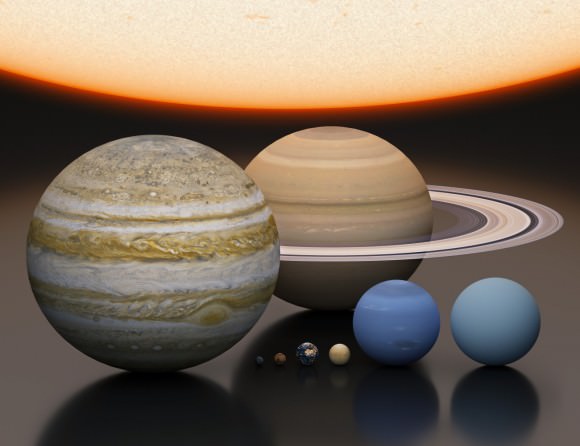
Astronomers sometimes informally divide this structure into separate regions. First, there is the Inner Solar System, which includes the four terrestrial planets and the Asteroid Belt. Beyond this, there’s the outer Solar System that includes the four gas giant planets. Meanwhile, there’s the outermost parts of the Solar System are considered a distinct region consisting of the objects beyond Neptune (i.e. Trans-Neptunian Objects).
Most of the planets in the Solar System possess secondary systems of their own, being orbited by planetary objects called natural satellites (or moons). In the case of the four giant planets, there are also planetary rings – thin bands of tiny particles that orbit them in unison. Most of the largest natural satellites are in synchronous rotation, with one face permanently turned toward their parent.
The Sun, which comprises nearly all the matter in the Solar System, is composed of roughly 98% hydrogen and helium. The terrestrial planets of the Inner Solar System are composed primarily of silicate rock, iron and nickel. Beyond the Asteroid Belt, planets are composed mainly of gases (such as hydrogen, helium) and ices – like water, methane, ammonia, hydrogen sulfide and carbon dioxide.
Objects farther from the Sun are composed largely of materials with lower melting points. Icy substances comprise the majority of the satellites of the giant planets, as well as most of Uranus and Neptune (hence why they are sometimes referred to as “ice giants”) and the numerous small objects that lie beyond Neptune’s orbit.
Together, gases and ices are referred to as volatiles. The boundary in the Solar System beyond which those volatile substances could condense is known as the frost line, which lies roughly 5 AU from the Sun. Within the Kuiper Belt, objects and planetesimals are composed mainly of these materials and rock.
Formation and Evolution:
The Solar System formed 4.568 billion years ago from the gravitational collapse of a region within a large molecular cloud composed of hydrogen, helium, and small amounts of heavier elements fused by previous generations of stars. As the region that would become the Solar System (known as the pre-solar nebula) collapsed, conservation of angular momentum caused it to rotate faster.
The center, where most of the mass collected, became increasingly hotter than the surrounding disc. As the contracting nebula rotated faster, it began to flatten into a protoplanetary disc with a hot, dense protostar at the center. The planets formed by accretion from this disc, in which dust and gas gravitated together and coalesced to form ever larger bodies.
Due to their higher boiling points, only metals and silicates could exist in solid form closer to the Sun, and these would eventually form the terrestrial planets of Mercury, Venus, Earth, and Mars. Because metallic elements only comprised a very small fraction of the solar nebula, the terrestrial planets could not grow very large.
In contrast, the giant planets (Jupiter, Saturn, Uranus, and Neptune) formed beyond the point between the orbits of Mars and Jupiter where material is cool enough for volatile icy compounds to remain solid (i.e. the frost line).
The ices that formed these planets were more plentiful than the metals and silicates that formed the terrestrial inner planets, allowing them to grow massive enough to capture large atmospheres of hydrogen and helium. Leftover debris that never became planets congregated in regions such as the asteroid belt, Kuiper belt, and Oort cloud.
Within 50 million years, the pressure and density of hydrogen in the center of the protostar became great enough for it to begin thermonuclear fusion. The temperature, reaction rate, pressure, and density increased until hydrostatic equilibrium was achieved.
At this point, the Sun became a main-sequence star. Solar wind from the Sun created the heliosphere and swept away the remaining gas and dust from the protoplanetary disc into interstellar space, ending the planetary formation process.
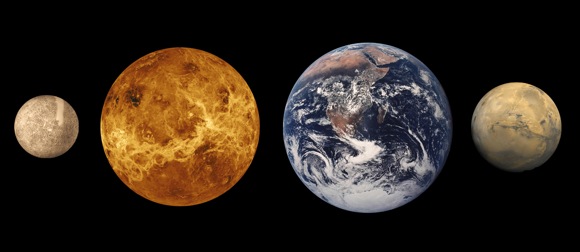
The Solar System will remain roughly as we know it today until the hydrogen in the core of the Sun has been entirely converted to helium. This will occur roughly 5 billion years from now and mark the end of the Sun’s main-sequence life. At this time, the core of the Sun will collapse, and the energy output will be much greater than at present.
The outer layers of the Sun will expand to roughly 260 times its current diameter, and the Sun will become a red giant. The expanding Sun is expected to vaporize Mercury and Venus and render Earth uninhabitable as the habitable zone moves out to the orbit of Mars. Eventually, the core will be hot enough for helium fusion and the Sun will burn helium for a time, after which nuclear reactions in the core will start to dwindle.
At this point, the Sun’s outer layers will move away into space, leaving a white dwarf – an extraordinarily dense object that will have half the original mass of the Sun, but will be the size of Earth. The ejected outer layers will form what is known as a planetary nebula, returning some of the material that formed the Sun to the interstellar medium.
Inner Solar System:
In the inner Solar System, we find the “Inner Planets” – Mercury, Venus, Earth, and Mars – which are so named because they orbit closest to the Sun. In addition to their proximity, these planets have a number of key differences that set them apart from planets elsewhere in the Solar System.
For starters, the inner planets are rocky and terrestrial, composed mostly of silicates and metals, whereas the outer planets are gas giants. The inner planets are also much more closely spaced than their outer Solar System counterparts. In fact, the radius of the entire region is less than the distance between the orbits of Jupiter and Saturn.
Generally, inner planets are smaller and denser than their counterparts, and have few to no moons or rings circling them. The outer planets, meanwhile, often have dozens of satellites and rings composed of particles of ice and rock.
The terrestrial inner planets are composed largely of refractory minerals such as the silicates, which form their crusts and mantles, and metals such as iron and nickel which form their cores. Three of the four inner planets (Venus, Earth and Mars) have atmospheres substantial enough to generate weather. All of them have impact craters and tectonic surface features as well, such as rift valleys and volcanoes.
Of the inner planets, Mercury is the closest to our Sun and the smallest of the terrestrial planets. Its magnetic field is only about 1% that of Earth’s, and it’s very thin atmosphere means that it is hot during the day (up to 430°C) and freezing at night (as low as -187 °C) because the atmosphere can neither keep heat in or out. It has no moons of its own and is comprised mostly of iron and nickel. Mercury is one of the densest planets in the Solar System.
Venus, which is about the same size as Earth, has a thick toxic atmosphere that traps heat, making it the hottest planet in the Solar System. This atmosphere is composed of 96% carbon dioxide, along with nitrogen and a few other gases. Dense clouds within Venus’ atmosphere are composed of sulphuric acid and other corrosive compounds, with very little water. Much of Venus’ surface is marked with volcanoes and deep canyons – the biggest of which is over 6400 km (4,000 mi) long.
Earth is the third inner planet and the one we know best. Of the four terrestrial planets, Earth is the largest, and the only one that currently has liquid water, which is necessary for life as we know it. Earth’s atmosphere protects the planet from dangerous radiation and helps keep valuable sunlight and warmth in, which is also essential for life to survive.
Like the other terrestrial planets, Earth has a rocky surface with mountains and canyons, and a heavy metal core. Earth’s atmosphere contains water vapor, which helps to moderate daily temperatures. Like Mercury, the Earth has an internal magnetic field. And our Moon, the only one we have, is comprised of a mixture of various rocks and minerals.

Mars is the fourth and final inner planet, and is also known as the “Red Planet” due to the oxidization of iron-rich materials that form the planet’s surface. Mars also has some of the most interesting terrain features of any of the terrestrial planets. These include the largest mountain in the Solar System (Olympus Mons) which rises some 21,229 m (69,649 ft) above the surface, and a giant canyon called Valles Marineris – which is 4000 km (2500 mi) long and reaches depths of up to 7 km (4 mi).
Much of Mars’ surface is very old and filled with craters, but there are geologically newer areas of the planet as well. At the Martian poles are polar ice caps that shrink in size during the Martian spring and summer. Mars is less dense than Earth and has a smaller magnetic field, which is indicative of a solid core, rather than a liquid one.
Mars’ thin atmosphere has led some astronomers to believe that the surface water that once existed there might have actually taken liquid form, but has since evaporated into space. The planet has two small moons called Phobos and Deimos.
Outer Solar System:
The outer planets (sometimes called Jovian planets or gas giants) are huge planets swaddled in gas that have rings and plenty of moons. Despite their size, only two of them are visible without telescopes: Jupiter and Saturn. Uranus and Neptune were the first planets discovered since antiquity, and showed astronomers that the solar system was bigger than previously thought.

Jupiter is the largest planet in our Solar System and spins very rapidly (10 Earth hours) relative to its orbit of the sun (12 Earth years). Its thick atmosphere is mostly made up of hydrogen and helium, perhaps surrounding a terrestrial core that is about Earth’s size. The planet has dozens of moons, some faint rings and a Great Red Spot – a raging storm that has happening for the past 400 years at least.
Saturn is best known for its prominent ring system – seven known rings with well-defined divisions and gaps between them. How the rings got there is one subject under investigation. It also has dozens of moons. Its atmosphere is mostly hydrogen and helium, and it also rotates quickly (10.7 Earth hours) relative to its time to circle the Sun (29 Earth years).
Uranus was first discovered by William Herschel in 1781. The planet’s day takes about 17 Earth hours and one orbit around the Sun takes 84 Earth years. Its mass contains water, methane, ammonia, hydrogen and helium surrounding a rocky core. It has dozens of moons and a faint ring system. The only spacecraft to visit this planet was the Voyager 2 spacecraft in 1986.
Neptune is a distant planet that contains water, ammmonia, methane, hydrogen and helium and a possible Earth-sized core. It has more than a dozen moons and six rings. NASA’s Voyager 2 spacecraft also visited this planet and its system by 1989 during its transit of the outer Solar System.
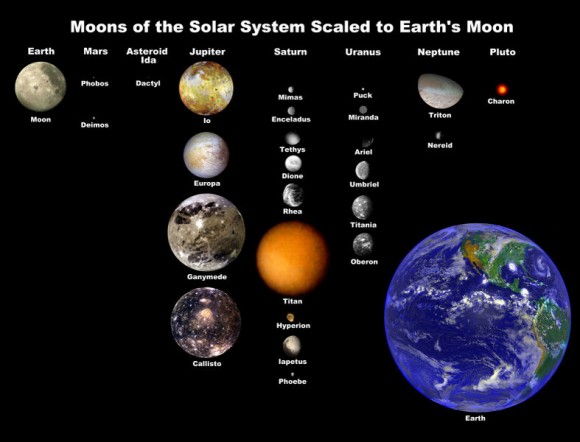
Trans-Neptunian Region:
There have been more than a thousand objects discovered in the Kuiper Belt, and it’s theorized that there are as many as 100,000 objects larger than 100 km in diameter. Given to their small size and extreme distance from Earth, the chemical makeup of KBOs is very difficult to determine.
However, spectrographic studies conducted of the region since its discovery have generally indicated that its members are primarily composed of ices: a mixture of light hydrocarbons (such as methane), ammonia, and water ice – a composition they share with comets. Initial studies also confirmed a broad range of colors among KBOs, ranging from neutral grey to deep red.
This suggests that their surfaces are composed of a wide range of compounds, from dirty ices to hydrocarbons. In 1996, Robert H. Brown et al. obtained spectroscopic data on the KBO 1993 SC, revealing its surface composition to be markedly similar to that of Pluto (as well as Neptune’s moon Triton) in that it possessed large amounts of methane ice.
Water ice has been detected in several KBOs, including 1996 TO66, 38628 Huya and 20000 Varuna. In 2004, Mike Brown et al. determined the existence of crystalline water ice and ammonia hydrate on one of the largest known KBOs, 50000 Quaoar. Both of these substances would have been destroyed over the age of the Solar System, suggesting that Quaoar had been recently resurfaced, either by internal tectonic activity or by meteorite impacts.
Keeping Pluto company out in the Kuiper belt are many other objects worthy of mention. Quaoar, Makemake, Haumea, Orcus and Eris are all large icy bodies in the Belt and several of them even have moons of their own. These are all tremendously far away, and yet, very much within reach.
Oort Cloud and Farthest Regions:
The Oort Cloud is thought to extend from between 2,000 and 5,000 AU (0.03 and 0.08 ly) to as far as 50,000 AU (0.79 ly) from the Sun, though some estimates place the outer edge as far as 100,000 and 200,000 AU (1.58 and 3.16 ly). The Cloud is thought to be comprised of two regions – a spherical outer Oort Cloud of 20,000 – 50,000 AU (0.32 – 0.79 ly), and disc-shaped inner Oort (or Hills) Cloud of 2,000 – 20,000 AU (0.03 – 0.32 ly).
The outer Oort cloud may have trillions of objects larger than 1 km (0.62 mi), and billions that measure 20 kilometers (12 mi) in diameter. Its total mass is not known, but – assuming that Halley’s Comet is a typical representation of outer Oort Cloud objects – it has the combined mass of roughly 3×1025 kilograms (6.6×1025 pounds), or five Earths.
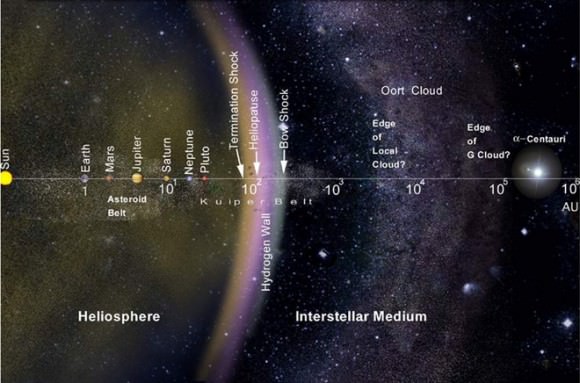
Based on the analyses of past comets, the vast majority of Oort Cloud objects are composed of icy volatiles – such as water, methane, ethane, carbon monoxide, hydrogen cyanide, and ammonia. The appearance of asteroids thought to be originating from the Oort Cloud has also prompted theoretical research that suggests that the population consists of 1-2% asteroids.
Earlier estimates placed its mass up to 380 Earth masses, but improved knowledge of the size distribution of long-period comets has led to lower estimates. The mass of the inner Oort Cloud, meanwhile, has yet to be characterized. The contents of both Kuiper Belt and the Oort Cloud are known as Trans-Neptunian Objects (TNOs), because the objects of both regions have orbits that that are further from the Sun than Neptune’s orbit.
Exploration:
Our knowledge of the Solar System also benefited immensely from the advent of robotic spacecraft, satellites, and robotic landers. Beginning in the mid-20th century, in what was known as “The Space Age“, manned and robotic spacecraft began exploring planets, asteroids and comets in the Inner and Outer Solar System.
All planets in the Solar System have now been visited to varying degrees by spacecraft launched from Earth. Through these unmanned missions, humans have been able to get close-up photographs of all the planets. In the case of landers and rovers, tests have been performed on the soils and atmospheres of some.
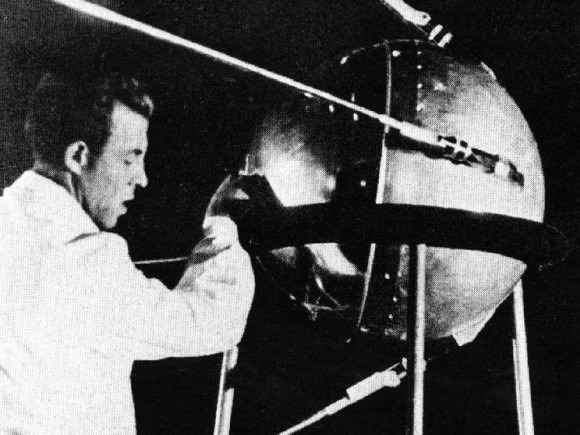
The first artificial object sent into space was the Soviet satellite Sputnik 1, which was launched in space in 1957, successfully orbited the Earth for months, and collected information on the density of the upper atmosphere and the ionosphere. The American probe Explorer 6, launched in 1959, was the first satellite to capture images of the Earth from space.
Robotic spacecraft conducting flybys also revealed considerable information about the planet’s atmospheres, geological and surface features. The first successful probe to fly by another planet was the Soviet Luna 1 probe, which sped past the Moon in 1959. The Mariner program resulted in multiple successful planetary flybys, consisting of the Mariner 2 mission past Venus in 1962, the Mariner 4 mission past Mars in 1965, and the Mariner 10 mission past Mercury in 1974.
By the 1970’s, probes were being dispatched to the outer planets as well, beginning with the Pioneer 10 mission which flew past Jupiter in 1973 and the Pioneer 11 visit to Saturn in 1979. The Voyager probes performed a grand tour of the outer planets following their launch in 1977, with both probes passing Jupiter in 1979 and Saturn in 1980-1981. Voyager 2 then went on to make close approaches to Uranus in 1986 and Neptune in 1989.
Launched on January 19th, 2006, the New Horizons probe is the first man-made spacecraft to explore the Kuiper Belt. This unmanned mission flew by Pluto in July 2015. Should it prove feasible, the mission will also be extended to observe a number of other Kuiper Belt Objects (KBOs) in the coming years.
Orbiters, rovers, and landers began being deployed to other planets in the Solar System by the 1960’s. The first was the Soviet Luna 10 satellite, which was sent into lunar orbit in 1966. This was followed in 1971 with the deployment of the Mariner 9 space probe, which orbited Mars, and the Soviet Venera 9 which orbited Venus in 1975.
The Galileo probe became the first artificial satellite to orbit an outer planet when it reached Jupiter in 1995, followed by the Cassini–Huygens probe orbiting Saturn in 2004. Mercury and Vesta were explored by 2011 by the MESSENGER and Dawn probes, respectively, with Dawn establishing orbit around the asteroid/dwarf planet Ceres in 2015.
The first probe to land on another Solar System body was the Soviet Luna 2 probe, which impacted the Moon in 1959. Since then, probes have landed on or impacted on the surfaces of Venus in 1966 (Venera 3), Mars in 1971 (Mars 3 and Viking 1 in 1976), the asteroid 433 Eros in 2001 (NEAR Shoemaker), and Saturn’s moon Titan (Huygens) and the comet Tempel 1 (Deep Impact) in 2005.
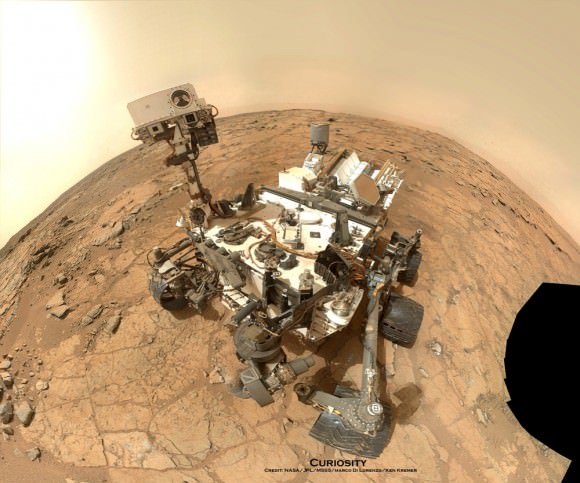
To date, only two worlds in the Solar System, the Moon and Mars, have been visited by mobile rovers. The first robotic rover to land on another planet was the Soviet Lunokhod 1, which landed on the Moon in 1970. The first to visit another planet was Sojourner, which traveled 500 meters across the surface of Mars in 1997, followed by Spirit (2004), Opportunity (2004), and Curiosity (2012).
Manned missions into space began in earnest in the 1950’s, and was a major focal point for both the United States and Soviet Union during the “Space Race“. For the Soviets, this took the form of the Vostok program, which involved sending manned space capsules into orbit.
The first mission – Vostok 1 – took place on April 12th, 1961, and was piloted by Soviet cosmonaut Yuri Gagarin (the first human being to go into space). On June 6th, 1963, the Soviets also sent the first woman – Valentina Tereshvoka – into space as part of the Vostok 6 mission.
In the US, Project Mercury was initiated with the same goal of placing a crewed capsule into orbit. On May 5th, 1961, astronaut Alan Shepard went into space aboard the Freedom 7 mission and became the first American (and second human) to go into space.
After the Vostok and Mercury programs were completed, the focus of both nations and space programs shifted towards the development of two and three-person spacecraft, as well as the development of long-duration spaceflights and extra-vehicular activity (EVA).
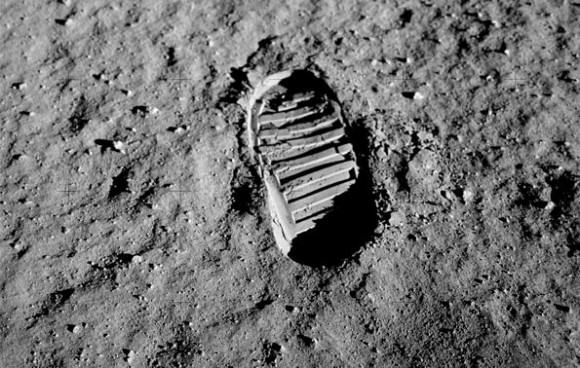
This took the form of the Voshkod and Gemini programs in the Soviet Union and US, respectively. For the Soviets, this involved developing a two to three-person capsule, whereas the Gemini program focused on developing the support and expertise needed for an eventual manned mission to the Moon.
These latter efforts culminated on July 21st, 1969 with the Apollo 11 mission, when astronauts Neil Armstrong and Buzz Aldrin became the first men to walk on the Moon. As part of the Apollo program, five more Moon landings would take place through 1972, and the program itself resulted in many scientific packages being deployed on the Lunar surface, and samples of moon rocks being returned to Earth.
After the Moon Landing took place, the focus of the US and Soviet space programs then began to shift to the development of space stations and reusable spacecraft. For the Soviets, this resulted in the first crewed orbital space stations dedicated to scientific research and military reconnaissance – known as the Salyut and Almaz space stations.
The first orbital space station to host more than one crew was NASA’s Skylab, which successfully held three crews from 1973 to 1974. The first true human settlement in space was the Soviet space station Mir, which was continuously occupied for close to ten years, from 1989 to 1999. It was decommissioned in 2001, and its successor, the International Space Station, has maintained a continuous human presence in space since then.

The United States’ Space Shuttle, which debuted in 1981, became the only reusable spacecraft to successfully make multiple orbital flights. The five shuttles that were built (Atlantis, Endeavour, Discovery, Challenger, Columbia and Enterprise) flew a total of 121 missions before being decommissioned in 2011.
During their history of service, two of the craft were destroyed in accidents. These included the Space Shuttle Challenger – which exploded upon take-off on Jan. 28th, 1986 – and the Space Shuttle Columbia which disintegrated during re-entry on Feb. 1st, 2003.
In 2004, then-U.S. President George W. Bush announced the Vision for Space Exploration, which called for a replacement for the aging Shuttle, a return to the Moon and, ultimately, a manned mission to Mars. These goals have since been maintained by the Obama administration, and now include plans for an Asteroid Redirect mission, where a robotic craft will tow an asteroid closer to Earth so a manned mission can be mounted to it.
All the information gained from manned and robotic missions about the geological phenomena of other planets – such as mountains and craters – as well as their seasonal, meteorological phenomena (i.e. clouds, dust storms and ice caps) have led to the realization that other planets experience much the same phenomena as Earth. In addition, it has also helped scientists to learn much about the history of the Solar System and its formation.
As our exploration of the Inner and Outer Solar System has improved and expanded, our conventions for categorizing planets has also changed. Our current model of the Solar System includes eight planets (four terrestrial, four gas giants), four dwarf planets, and a growing number of Trans-Neptunian Objects that have yet to be designated. It also contains and is surrounded by countless asteroids and planetesimals.
Given its sheer size, composition and complexity, researching our Solar System in full detail would take an entire lifetime. Obviously, no one has that kind of time to dedicate to the topic, so we have decided to compile the many articles we have about it here on Universe Today in one simple page of links for your convenience.
There are thousands of facts about the solar system in the links below. Enjoy your research.
The Solar System:
- Interesting Facts About the Solar System
- Our Solar System
- What is the Solar System?
- How Big is the Solar System?
- Diameter of the Solar System
- Solar System Orbits
- How Old is the Solar System?
- Stars and Planets
- All About Planets
- Inner Solar System
- Beyond the Solar System
- Solar System, Galaxy, Universe
- Diagram of the Solar System
- New Solar System
- Solar System Order
- Oort Cloud
- Interplanetary Space
- Plane of the Ecliptic
- Planetesimals
- Deep Space
- Protoplanets
- Planetoid
- Nemesis
Theories about the Solar System:
- Formation of the Solar System
- How Was the Solar System Formed?
- Origin of the Solar System
- Solar Nebula
- Solar Disruption Theory
- Solar Nebula Theory
- Geocentric Theory
- Geocentric Model
- Heliocentric Model
- Difference Between Geocentric and Heliocentric
Moons:
Anything EXTREME!:
- How Many Stars are in the Solar System?
- Largest Volcano in the Solar System
- What is the Largest Moon in the Solar System?
- What is the Smallest Moon in the Solar System?
- Largest in the Solar System
Solar System Stuffs:
Could We Terraform Jupiter?
So just what would it take to terraform Jupiter, the largest planet in our solar system?
Just a few videos ago, I blew minds with a “How to” on terraforming the Moon. Once we’ve developed a Solar System spanning civilization and have claimed mastery over the laws of physics, and have common-place technology which staggers and dwarf our current comprehension of what’s possible it should be easy enough.
In fact, it might even be easier than terraforming Mars or Venus, as long as you keep a steady flow of gas to the Moon replenishing the constantly escaping atmosphere.
And in the comments on that video, ABitOfTheUniverse threw down, he wants to know what it would take to terraform Jupiter. All right “ABitOfTheUniverse”, if that is your real name… I’m up for it.
On the surface, this is madness. We already explained how Jupiter is completely and totally inhospitable to life. An alien started a “Build a star kit” and stopped a ? of the way through, because he got bored and wandered away. Just like his Mom said he would.
Jupiter is a ball of hydrogen and helium, which compresses these gasses to almost starlike temperatures and pressures. Fine, Jupiter is the absolute worst. It makes traveling to Venus look like a spa visit.
Jupiter does have something we can work with. Astronomers think below the septillions tons of hydrogen and gas, there’s actually a rocky core. The mass of the core is still a mystery, but recent computer simulations put it at somewhere between 7 and 45 times the mass of the Earth, complete with plenty of water ices and other chemicals you might require on an Earthlike planet.
Furthermore, this core may contain similar constituents as the internal structure of Earth. This means a central core of iron and nickel, surrounded by liquid metal, surrounded by rock.
The problem is you need to strip away 95% of the planet’s mass. It’s all that hydrogen and helium, and that’s pretty much impossible. And almost completely impossible, is still very slightly completely possible.
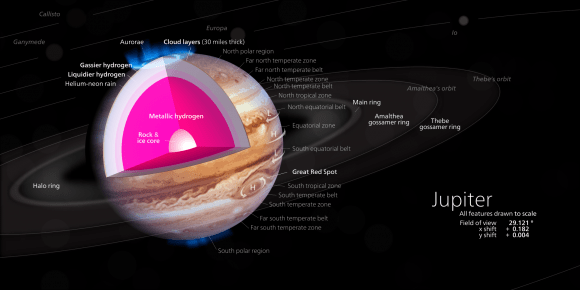
Jupiter is made of fuel. It’s like looking at a pool of gasoline and wondering if there was some way to get rid of it all. What good Solar System-spanning civilization hasn’t worked out hydrogen fusion? It’s a technology that’s probably only 30 years away from us now.
You could fly a spacecraft down into Jupiter’s gravity well and scoop up hydrogen fuel from the clouds. Or you could create fusion-powered dirigibles filled with hot hydrogen, which float around the cloud tops of Jupiter, using their fusion reactors to spew hydrogen off into space.
Over untold lengths of time, you could get at that rocky juicy center, once you stripped it of its hydrogen. Then you’ll need to do all that other stuff I mentioned in previous videos, to turn it into a habitable world.
Sure, it’s a world with much higher gravity than Earth, but that’s not my problem. You said “Earthlike”. That’ll teach you to make wishes with a monkey’s paw!
What if you need to move Jupiter first, perhaps a little closer to the Sun. There’s an awesome idea cooked up by Larry Niven in his book, “A World Out of Time”. It’s a fusion candle, and it lets you shift gas giants around.
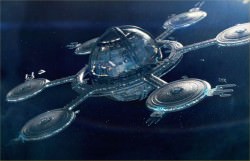
You take a long space station, and light up fusion thrusters on both ends. You dip one end down into the upper clouds, where it siphons hydrogen fuel. Both ends of the space station start blasting. One end keeps it from dropping down into the planet, and the other end pushes on the entire planet, pushing it around the Solar System.
Instead of trying to terraform Jupiter, we could just push the planet closer to the Sun, where its icy moons warm up and become habitable themselves.
Well, ABitOfTheUniverse, that sounds a little easier. What do you think? I’ll admit, trying to figure out how to terraform Jupiter was a good exercise in tomfoolery. Fortunately, my imagination is a limitless and renewable source of energy. We’ve done Mars, Venus, the Moon and now Jupiter. What should we terraform next? Tell us in the comments below.
Ceres Resembles Saturn’s Icy Moons
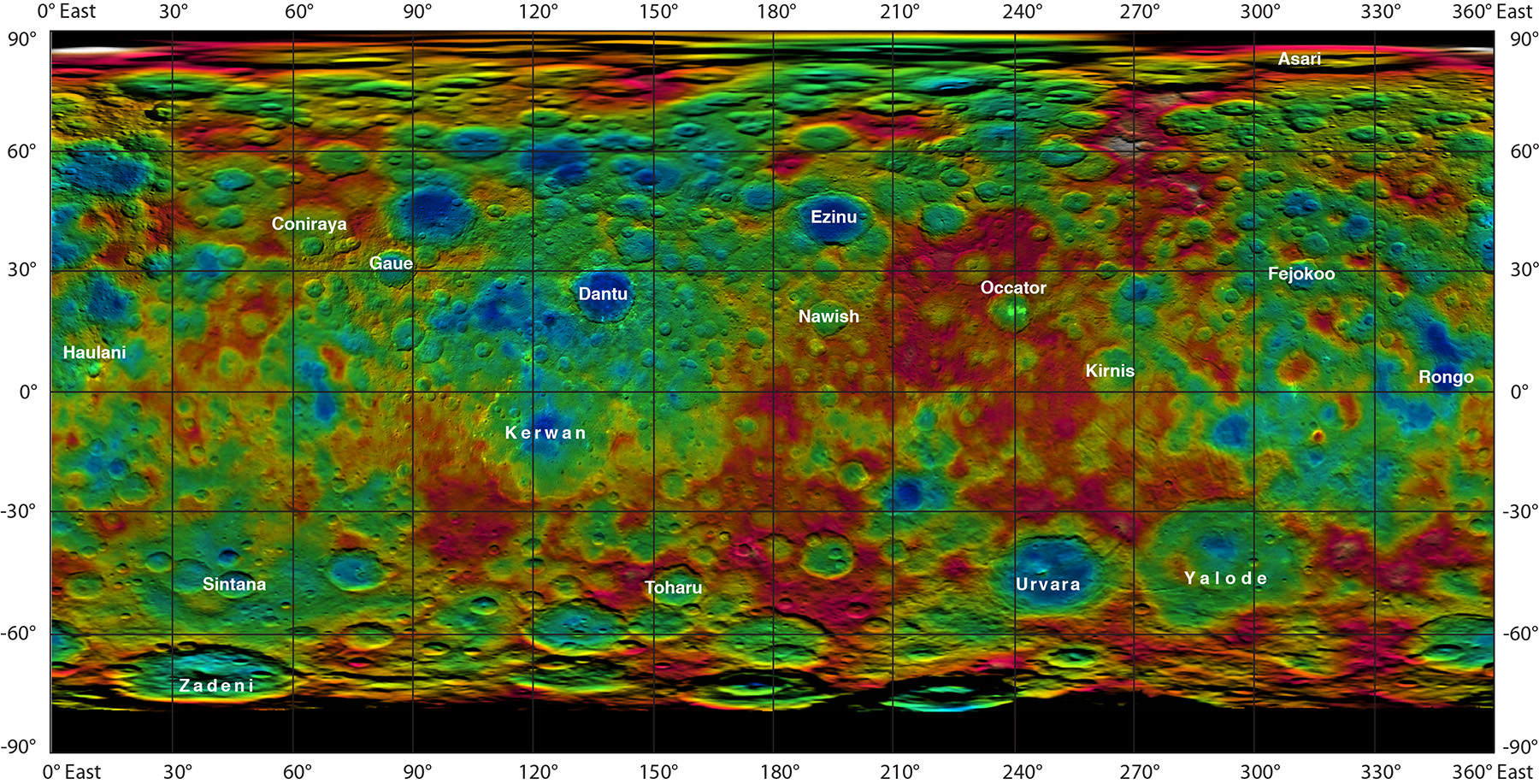
Ceres’ topography is revealed in full (but false) color in a new map created from elevation data gathered by NASA’s Dawn spacecraft, now nearly five months in orbit around the dwarf planet orbiting the Sun within the main asteroid belt.
With craters 3.7 miles (6 km) deep and mountains rising about the same distance from its surface, Ceres bears a resemblance to some of Saturn’s frozen moons.
“The craters we find on Ceres, in terms of their depth and diameter, are very similar to what we see on Dione and Tethys, two icy satellites of Saturn that are about the same size and density as Ceres,” said Paul Schenk, Dawn science team member and a geologist at the Lunar and Planetary Institute (LPI) in Houston, TX. “The features are pretty consistent with an ice-rich crust.”
Check out a rotation video of Ceres’ topography below:
In addition to elevation mapping Ceres has also had some of its more prominent craters named. No longer just “bright spot crater” and “Spot 1,” these ancient impact scars now have official IAU monikers… from the Roman Occator to the Hawaiian Haulani to the Hopi Kerwan, craters on Ceres are named after agriculture-related gods and goddesses of mythologies from around the world.
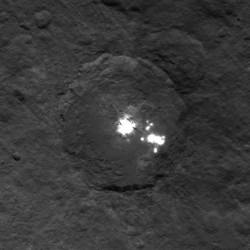
See a full list of Ceres’ named features here.
Dawn is currently moving closer toward Ceres into its third mapping orbit. By mid-August it will be 900 miles (1448 km) above Ceres’ surface and will proceed with acquiring data from this lower altitude, three times closer than it has been previously.
At 584 miles (940 km) in diameter Ceres is about 40 percent the size of Pluto.
NASA’s Dawn spacecraft is the first to successfully enter orbit around two different mission targets and the first to orbit a dwarf planet. Its first target was the asteroid Vesta, which it orbited from July 2011 to September 2012. Dawn arrived in orbit at Ceres on March 6, 2015 and there it will remain during its primary science phase and beyond; Ceres is now Dawn’s permanent home.
Learn more about the Dawn mission here and find out where Dawn and Ceres are now here.
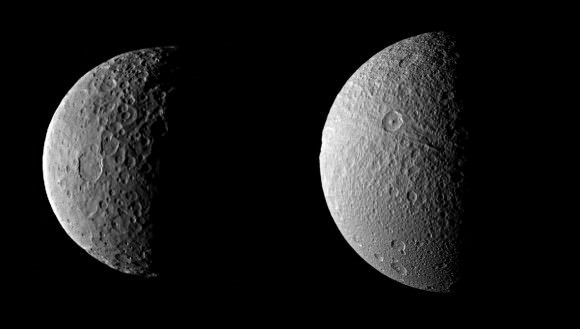
Source: NASA
Charon: Pluto’s Largest Moon
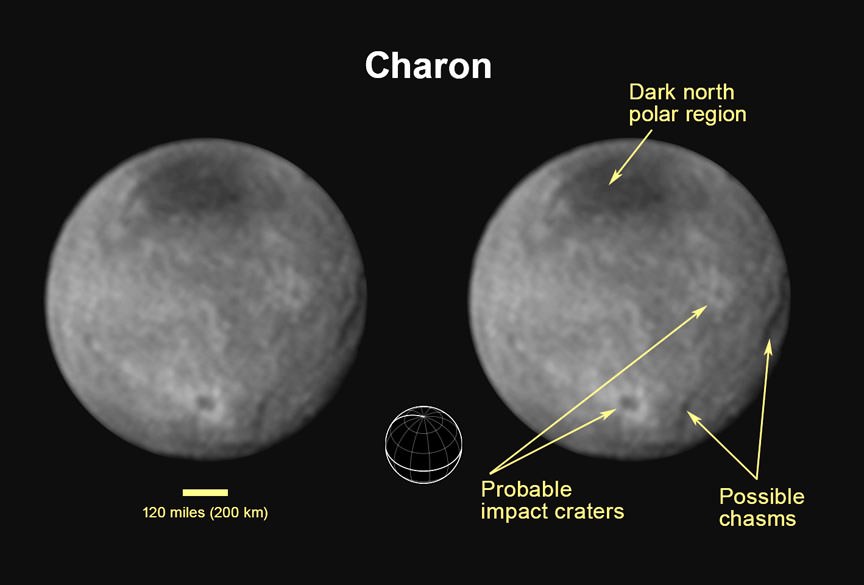
Beginning in 1978, astronomers began to discover that Pluto – the most distant known object from the Sun (at the time) – had its own moons. What had once been thought to be a solitary body occupying the outer edge of our Solar System suddenly appeared to have a system with a large moon Charon. And as time went on, a total of four moons would be discovered.
Of these, Charon is the largest and most easily observed, hence why it was discovered first. In addition to being the biggest of its peers, its also quite large in comparison to Pluto. As such, Charon has always had something of a unique relationship with its parent body, and stands apart as far as objects in the outer Solar System are concerned.
Cassini to Perform Its Final Flyby of Hyperion
On Sunday, May 31, the Cassini spacecraft will perform its last close pass of Hyperion, Saturn’s curiously spongelike moon. At approximately 9:36 a.m. EDT (13:36 UTC) it will zip past Hyperion at a distance of about 21,000 miles (34,000 km) – not its closest approach ever but considerably closer (by 17,500 miles/28,160 km) than it was when the image above was acquired.*
This will be Cassini’s last visit of Hyperion. It will make several flybys of other moons within Saturn’s equatorial plane over the course of 2015 before shifting to a more inclined orbit in preparation of the end phase of its mission and its operating life in 2017.
At 255 x 163 x 137 miles (410 x 262 x 220 km) in diameter, Hyperion is the largest of Saturn’s irregularly-shaped moons. Researchers suspect it’s the remnant of a larger body that was blown apart by an impact. Hyperion’s craters appear to have a “punched-in” look rather than having been excavated, and have no visible ejecta or secondary craters nearby.
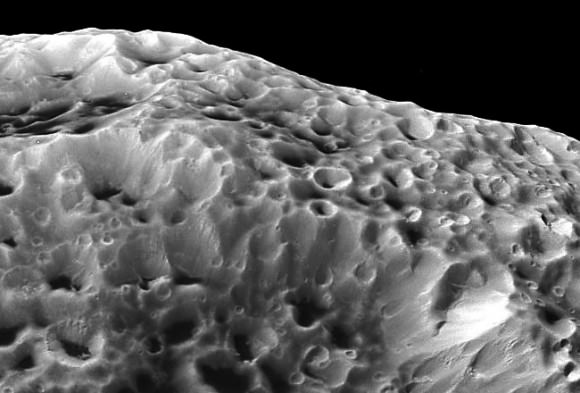
Hyperion orbits Saturn in an eccentric orbit at a distance of over 920,000 miles (1.48 million km)…that’s almost four times the distance our Moon is from us! This distance – as well as constant gravitational nudges from Titan – prevents Hyperion from becoming tidally locked with Saturn like nearly all of its other moons are. In fact its rotation is more of haphazard tumble than a stately spin, making targeted observations of any particular regions on its surface virtually impossible.
Images from the May 31 flyby are expected to arrive on Earth 24 to 48 hours later.
As small as it is Hyperion is Saturn’s eighth-largest moon, although it appears to be very porous and has a density half that of water. Read more about Hyperion here and see more images of it from Cassini here and here.
Source: NASA
*Cassini did come within 310 miles (500 km) of Hyperion on Sept. 26, 2005, but the images to make up the view above were acquired during approach.
UPDATE June 1, 2015: the raw images from Cassini’s flyby have arrived on Earth, check out a few below. (Looks like Cassini ended up with the same side of Hyperion again!)
